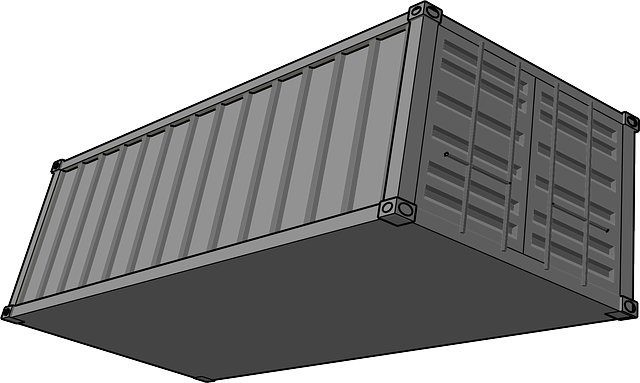Workers' compensation (WC) premiums are a critical factor for small and medium-sized enterprises (SMEs) managing costs and maintaining compliance. Premium fluctuations depend on industry, location, employee count, and job risks, with historical claims experience influencing rates. Businesses can reduce WC premiums by prioritizing worker safety through training, equipment upgrades, and robust procedures, which enhance workers comp compliance. Proactive risk management, including hazard assessment and safety programs, leads to significant long-term discounts. Staying informed about legal changes and industry best practices is essential for effective premium management and ensuring workers comp compliance.
Managing workers’ comp premiums effectively is crucial for businesses aiming to optimize their costs without compromising employee safety or legal compliance. This comprehensive guide explores strategic approaches to navigate the complex landscape of workers’ compensation insurance. From understanding premium factors and implementing cost-cutting measures, to leveraging risk management techniques and staying abreast of legal changes, these strategies empower employers to strategically manage risks and minimize premiums over time.
Understanding Workers' Comp Premiums and Their Factors

Workers’ compensation (WC) premiums are a crucial aspect of managing business costs, especially for small and medium-sized enterprises (SMEs). Understanding these premiums is essential for maintaining workers comp compliance and financial stability. The cost of WC coverage varies widely based on several factors. These include the industry in which the business operates, its location, the number of employees, and the specific risks associated with their jobs. For instance, construction sites or manufacturing facilities may face higher premiums due to the potential for more severe injuries or accidents compared to offices or retail stores.
Moreover, WC rates also consider the historical claims experience of a business. A company with a strong safety record and fewer previous claims will generally pay lower premiums than one with a poor safety track record. Other variables include employee demographics, training programs, and adherence to workplace safety standards. Businesses that actively invest in worker safety through training, equipment upgrades, and improved procedures can significantly reduce their WC premiums over time, enhancing both workers comp compliance and overall operational efficiency.
Implementing Cost-Cutting Measures Without Compromising Compliance

Many businesses, especially small and medium-sized enterprises (SMEs), often look for ways to reduce costs, including their workers’ compensation premiums. While cutting expenses is essential for financial health, it’s crucial to maintain compliance with workers’ comp laws and regulations to avoid legal issues and penalties. Implementing cost-cutting measures should be a strategic process that doesn’t compromise safety or adherence to standards.
One effective strategy is to regularly review and update risk assessment procedures. By identifying high-risk tasks or areas, businesses can target their safety efforts more precisely, leading to better loss control and reduced premiums. Additionally, staying informed about legislative changes and industry best practices ensures that cost-saving measures remain compliant. Regular communication with insurance providers can also offer valuable insights into potential savings without sacrificing protection for employees.
Utilizing Risk Management Techniques for Long-Term Savings

Many businesses often overlook the long-term benefits of integrating robust risk management techniques into their workers’ comp strategies, primarily focusing on short-term cost savings. However, adopting proactive measures can lead to significant discounts over time and enhance overall workers’ compensation compliance. By identifying and mitigating risks effectively, companies can reduce the likelihood and severity of workplace injuries, which directly impacts premium rates.
Risk management involves assessing potential hazards, implementing safety programs, and providing adequate training to employees. These practices not only create a safer work environment but also serve as solid evidence of a company’s commitment to compliance during audits. As a result, insurers may offer reduced premiums, reflecting the lower risk associated with such businesses.
Staying Updated: Legal Changes and Their Impact on Premium Management

Staying informed about legal changes is paramount for effective workers’ comp premium management. Labor laws and regulations evolve, directly influencing compliance requirements and premium structures. For instance, updates in workplace safety standards may trigger adjustments in coverage mandates, necessitating a reevaluation of risk assessment strategies. Similarly, modifications to state-specific workers’ compensation acts can have significant implications on premium calculations and policy terms.
Employers must remain agile in their approach, adapting quickly to these changes to maintain compliance. Regularly reviewing legal updates ensures that premium management strategies remain effective and aligned with current regulations. This proactive stance not only mitigates potential penalties but also optimizes costs by ensuring that insurance coverage accurately reflects the latest legal landscape.
By implementing strategic cost-cutting measures, staying updated with legal changes, and employing risk management techniques, businesses can effectively manage and reduce their workers’ comp premiums. These strategies not only ensure compliance but also contribute to long-term financial stability. Staying proactive in premium management is key to a healthy balance sheet and a safe work environment.
